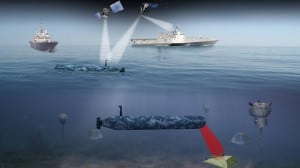
General Dyanimcs [GD] completed contractor trials for the U.S. Navy’s Knifefish mine countermeasure (MCM) unmanned undersea vessel (UUV), the company said Thursday.In tests managed by GD off the coast of Boston, the Knifefish operated in multiple mine test target fields at-sea, which used buried, bottom, and volume style Navy mine-test targets. GD said the vessel successfully verified its ability to detect, classify, and identify potential mines at various depths.GD said these trials went beyond previous assessments of the Knifefish because…

 By
By 











